 In what some are viewing as a challenge to Microsoft’s Office software, Google has dipped into its deep pockets and snapped up Upstartle, a small company best known for their online word-processor, Writely.
In what some are viewing as a challenge to Microsoft’s Office software, Google has dipped into its deep pockets and snapped up Upstartle, a small company best known for their online word-processor, Writely.
The software – still in beta – employs ‘Web 2.0’ technologies, like those used in Google Maps and GMail – to let users to create, edit and store documents online.
Crucially, the program also supports documents created in the Microsoft Word format and with Google’s proposed GDrive plan (which gives users massive storage on the Web), some pundits suspect that this could be the start of an onslaught on Microsoft’s Office 12.
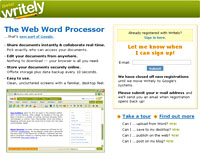 Blog announcements
Blog announcements
As is now the vogue, the two companies announced the deal via their respective corporate blogs, and although details are still scarce, it’s been revealed that Upstartle’s four staff members will join Google immediately.
“Writely is now part of Google,” wrote Upstartle co-founder Claudia Carpenter on the blog, commenting that the two companies were “matched in their culture and goals.”
There have been whispers circulating for months that Google was looking to develop a direct competitor to Microsoft Office, although analyst firm Ovum think that the acquisition is more about increasing revenue streams.
Writing in a research note, Ovum analysts David Bradshaw and David Mitchell observed that buying Writely would give Google another place to push online advertising and protect its revenue streams.
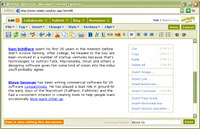 “That could provide enough revenues to pay for the acquisition in months and provide an interesting diversion to keep Microsoft looking over its shoulder,” said Bradshaw and Mitchell, adding that Writely’s integrated collaboration and blogging tools could also prove useful resources for Google’s hugely popular Blogger service.
“That could provide enough revenues to pay for the acquisition in months and provide an interesting diversion to keep Microsoft looking over its shoulder,” said Bradshaw and Mitchell, adding that Writely’s integrated collaboration and blogging tools could also prove useful resources for Google’s hugely popular Blogger service.
Joe Wilcox at Jupiter Research was also dismissive of claims that Google were getting ready to do battle with Microsoft: “Speculation is that Google will take on Microsoft in the productivity suite market with a hosted product. I suppose Google could do this, but why?”
“Microsoft has so many other word processing competitors already, at least in the consumer market … If Google is smart, Writely technology will bolster products Blogger, GMail and Google Talk (instant messaging),” he added.
For the time being, Upstartle has cut off new registrations following the announcement while the service is scaled up and moved over to Google’s systems.
In the meantime, interested users can sign up to a waiting list.
 You know the problem: you’ve rushed into work late, sat yourself down at the desk only to realise that there’s not enough USB ports on the machine so you can’t plug in your DVD backup.
You know the problem: you’ve rushed into work late, sat yourself down at the desk only to realise that there’s not enough USB ports on the machine so you can’t plug in your DVD backup.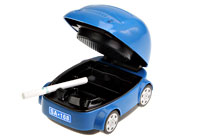 The ‘Mini Mirror Hub’, described as “the most tiny, fashionable USB 2.0 HUB,” can connect up to four USB 2.0 (or USB 1.1) devices, supporting 480Mbps, 12Mbps and 1.5Mbps speeds.
The ‘Mini Mirror Hub’, described as “the most tiny, fashionable USB 2.0 HUB,” can connect up to four USB 2.0 (or USB 1.1) devices, supporting 480Mbps, 12Mbps and 1.5Mbps speeds.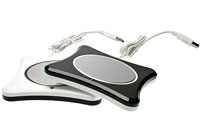 USB Ashtray
USB Ashtray USB Heating Gloves
USB Heating Gloves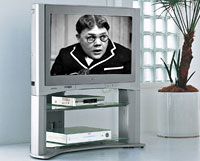 It looks like the days of chunky, clunky cathode ray tube TVs are numbered as worldwide revenues from slimline LCD (liquid crystal displays) TVs surpassed those of cathode-ray (CRT) televisions in the fourth quarter last year.
It looks like the days of chunky, clunky cathode ray tube TVs are numbered as worldwide revenues from slimline LCD (liquid crystal displays) TVs surpassed those of cathode-ray (CRT) televisions in the fourth quarter last year.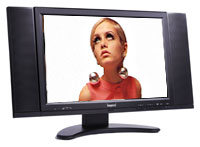 Sales were healthy for plasma-screen televisions, growing 31.3 percent to reach $5.29 billion in the same quarter, giving them the third-largest share of the market after LCD TVs and cathode-ray TVs.
Sales were healthy for plasma-screen televisions, growing 31.3 percent to reach $5.29 billion in the same quarter, giving them the third-largest share of the market after LCD TVs and cathode-ray TVs. Look out LCDs – here comes SED displays
Look out LCDs – here comes SED displays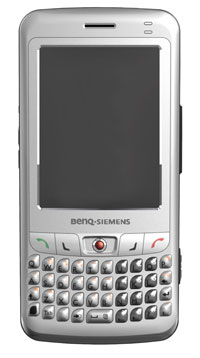 With a veritable orgy of announcements, BenQ Mobile rolled out six new mobile phones at the CeBIT trade show in Germany.
With a veritable orgy of announcements, BenQ Mobile rolled out six new mobile phones at the CeBIT trade show in Germany.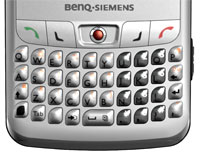 VoIP calls are made possible through the built in 802.11b/g Wi-Fi connectivity and pre-loaded Skype software.
VoIP calls are made possible through the built in 802.11b/g Wi-Fi connectivity and pre-loaded Skype software.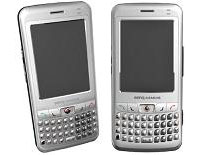 Also announced was the flagship EL71, a tri-band, 16.5mm thin slider phone with a metal casing in brushed aluminium finish. Designed for the “young professional,” the phone sports a 2-inch, 260,000-color QVGA display.
Also announced was the flagship EL71, a tri-band, 16.5mm thin slider phone with a metal casing in brushed aluminium finish. Designed for the “young professional,” the phone sports a 2-inch, 260,000-color QVGA display. The CL71 slide phone is another slim number (17.8mm) with built-in 1.3-megapixel camera, MP3 player and radio with a 2-inch TFT 262k display offering 176 x 220 picture resolution.
The CL71 slide phone is another slim number (17.8mm) with built-in 1.3-megapixel camera, MP3 player and radio with a 2-inch TFT 262k display offering 176 x 220 picture resolution.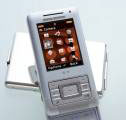 Finally, the wedge shaped E61 comes in orange, yellow, or silver, with a built-in VGA camera with 2x/4x digital zoom.
Finally, the wedge shaped E61 comes in orange, yellow, or silver, with a built-in VGA camera with 2x/4x digital zoom. If you thought the switchover to digital television was going to be a challenge, spare a thought for the regulators, policy makers and engineers who are already tasked with trying to figure out the best way of re-allocating the spectrum freed up by switching off the analogue broadcasting signal.
If you thought the switchover to digital television was going to be a challenge, spare a thought for the regulators, policy makers and engineers who are already tasked with trying to figure out the best way of re-allocating the spectrum freed up by switching off the analogue broadcasting signal. The first two sessions focused mainly on the problems associated with harmonisation. It is essential that adjoining states will have to work together to allocate spectrum, if there are not to be interference issues. The ITU’s
The first two sessions focused mainly on the problems associated with harmonisation. It is essential that adjoining states will have to work together to allocate spectrum, if there are not to be interference issues. The ITU’s  Of course regulatory uncertainty is same for all those looking to unlock the digital dividend (although some argue that the broadcasters are well positioned because they already sit on the spectrum). Whatever happens its going to be a complex and highly political interplay between policy makers, regulators and transnational organisations such as the ITU.
Of course regulatory uncertainty is same for all those looking to unlock the digital dividend (although some argue that the broadcasters are well positioned because they already sit on the spectrum). Whatever happens its going to be a complex and highly political interplay between policy makers, regulators and transnational organisations such as the ITU.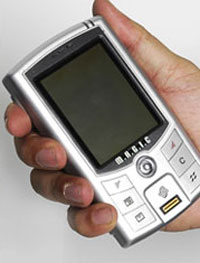 Currently hovering betwixt prototype and retail status, Advance Tech Communications new Windows Mobile smartphone market looks hot! hot! hot!
Currently hovering betwixt prototype and retail status, Advance Tech Communications new Windows Mobile smartphone market looks hot! hot! hot!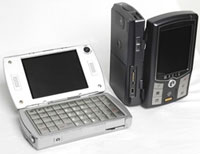 On board storage is taken care of courtesy of a generous 8GB hard disk, backed up by 512MB RAM and 512MB ROM, with a micro-SD expansion card slot.
On board storage is taken care of courtesy of a generous 8GB hard disk, backed up by 512MB RAM and 512MB ROM, with a micro-SD expansion card slot. Instead, the company are proclaiming their new device to be a “laptop computer miniaturised to the size of a handheld device,” which perhaps isn’t the snappiest description they could have come up with.
Instead, the company are proclaiming their new device to be a “laptop computer miniaturised to the size of a handheld device,” which perhaps isn’t the snappiest description they could have come up with. On balance, the world is probably a better place with Microsoft, than it would be if Bill Gates hadn’t succeeded. But this week, the company is trying to get us to admit something different: that it is an innovative presence in the world, encouraging innovation in others. Specifically, it is running the Imagine Cup, and this week, in the UK, it’s judging 50 students who have entered a programming competition.
On balance, the world is probably a better place with Microsoft, than it would be if Bill Gates hadn’t succeeded. But this week, the company is trying to get us to admit something different: that it is an innovative presence in the world, encouraging innovation in others. Specifically, it is running the Imagine Cup, and this week, in the UK, it’s judging 50 students who have entered a programming competition.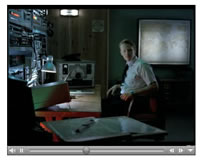 The content is fine! It goes on fairly meaninglessly with an animated techno-rabbit running around and flying; and then launches the theme.
The content is fine! It goes on fairly meaninglessly with an animated techno-rabbit running around and flying; and then launches the theme. So naturally, I asked MS why. I got their local expert, and asked: “Why on earth would you copy-protect a promotional video? Surely, the idea is that people mail it around, and it generates viral marketing traction, like the
So naturally, I asked MS why. I got their local expert, and asked: “Why on earth would you copy-protect a promotional video? Surely, the idea is that people mail it around, and it generates viral marketing traction, like the  As excuses go, that is such clear nonsense that I didn’t know what to say. If you have a modem link, you certainly can’t stream a WMV file. I couldn’t stream it with a 10megabit Telewest cable modem! And in any case, both the clips on that page are short! – one is two minutes, and that’s the long one. The other is 30 seconds.
As excuses go, that is such clear nonsense that I didn’t know what to say. If you have a modem link, you certainly can’t stream a WMV file. I couldn’t stream it with a 10megabit Telewest cable modem! And in any case, both the clips on that page are short! – one is two minutes, and that’s the long one. The other is 30 seconds. The London book fair, just finished. At it, there was no sign of an e-book reader from Microsoft – which is odd, because all the stuff Microsoft has been teasing us about with
The London book fair, just finished. At it, there was no sign of an e-book reader from Microsoft – which is odd, because all the stuff Microsoft has been teasing us about with